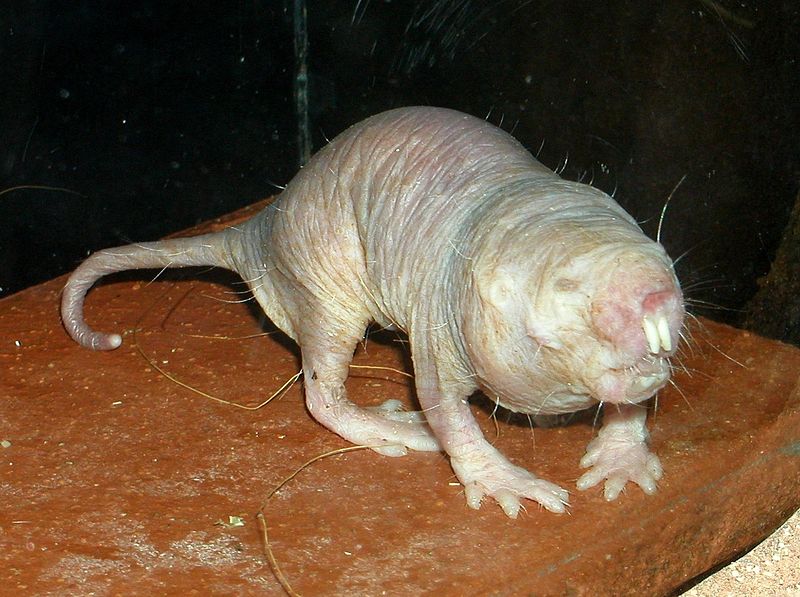
In June I wrote about the amazing longevity of naked mole rats. These rodents can live for thirty years, whereas their mice cousins can only live two years. One secret to their longevity may be the fact that they’ve never been documented with cancer. As I wrote back in June, scientists at the University of Rochester found a gooey protein in the tissues of the rodents that prevents cells from multiplying out of control.
But naked mole rats do more than just fight cancer. In addition to avoiding tumors, they also resist the overall decline seen in other aging mammals. A new study from the same Rochester team may reveal how they ward off aging: they’re very careful about making proteins.
Like other animals, naked mole rats carry DNA that encodes thousands of genes. To make a protein, the mole rat’s cells make a single-stranded version of the corresponding gene (called messenger RNA), which is then grabbed by a cellular factory called a ribosome, which is made up of RNA molecules and proteins. The ribosome reads the messenger RNA and uses the genetic code to pick out building blocks to attach to a growing protein.
If the ribosome picks the wrong building block, a protein may end up with a defective shape and can’t do its job properly. A big part of getting old is the accumulation of these defective proteins. Our cells end up getting worse and worse at all the things they excelled at when we were young. Collagen no longer stretches in our skin; our digestive enzymes no longer break down nutrients as efficiently as before. A number of studies have hinted that we can extend our healthy lifespans by boosting our ability to repair defective proteins.
The Rochester team took a look at how naked mole rats build proteins. They discovered something odd about their ribosomes. All living things use pretty much the same set of RNA molecules in this factory. One of these molecules is called 28S. Naked mole rats have a mutation to the gene for 28S RNA. Instead of producing a single RNA molecule, they break it in two.
To see if two 28S molecules worked differently than just one, the researchers compared how the naked mole rats make proteins to the process in mice. They engineered a gene and inserted it into both species. If a cell made an error at one site in the protein, the protein would give off a flash of light. A cell that always built perfect proteins would stay dark. A sloppy cell would glow.
The scientists found that the naked mole rat cells were much darker than those of mice. They built the engineered protein far more accurately, in other words. Naked mole rats, the scientists found, made anywhere from four to ten times fewer mistakes. Yet the naked mole rats can make their proteins as quickly as the sloppier mice.
The scientists were unable to directly examine the 28S RNA fragments in action, so they can’t say for sure that splitting 28S in two is the reason for the accuracy of naked mole rat proteins. Still, the results offer an intriguing hint that this ugly creature has more than one secret to long life. Whether we can borrow that secret is hardly clear. I for one wouldn’t volunteer to have my ribosomes shattered.
(Reference: Jorge Azpurua et al.“Naked mole-rat has increased translational fidelity compared with the mouse, as well as a unique 28S ribosomal RNA cleavage.” PNAS 2013)